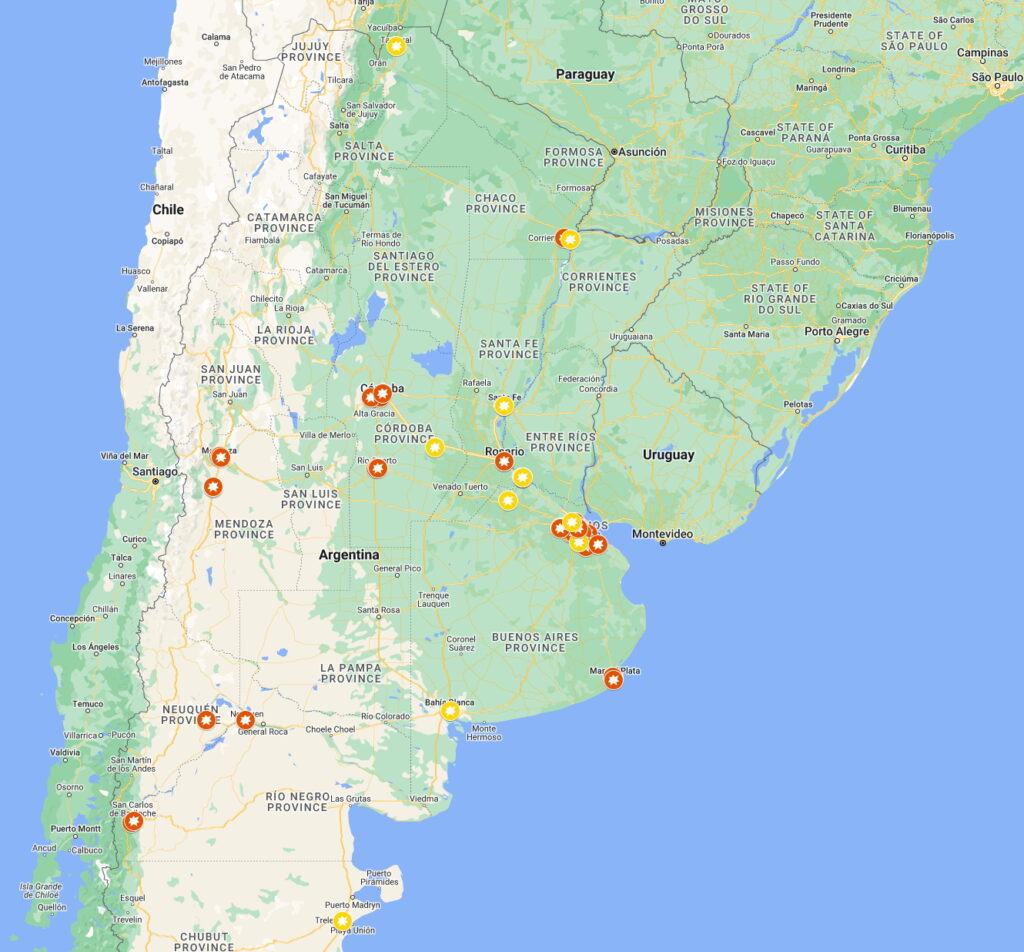Using Open Source Research Tools to Combat Disinformation During National Crises

Versión en Español Disponible Aquí
In the context of the post-election period following the PASO elections (held on August 13), a series of looting incidents, or attempted looting, began across Argentina. In response to this situation, the CRIES team initiated a project that collected incidents as users posted them on social media in real-time. This led to the creation of a platform that later became known as the «Looting Map.»
On August 13, Argentina held the PASO elections, which resulted in the surprising victory of presidential candidate Javier Milei from the La Libertad Avanza party. Days later, with the Argentine peso devalued and rampant inflation, during the weekend of August 18 to 20, the country began to experience a large number of unconfirmed reports of looting in various locations, primarily through social media.
Initially, the incidents were concentrated in cities in Mendoza, Córdoba, and Neuquén. However, they quickly spread to other provinces, especially the Province of Buenos Aires.
As has been the case in recent years, social media platforms like Facebook, Twitter, and TikTok were flooded with videos and photos that factually depicted the events, as well as others that sought to misinform about what was happening. For example, we were able to debunk videos of looting in Paris that were shared with the aim of attributing them to Argentina. In response, CRIES considered it urgent to verify the information, debunk false claims, and provide greater clarity during a moment of crisis and uncertainty in the country.
In just 48 hours, our team shifted its focus from verifying current social media content to developing a real-time national monitoring platform, which the media later called the «Looting Map.» The aforementioned team, composed of Andrei Serbin Pont, Alina Sotes, Fermín Selva, and Sofía Molina, implemented a multi-stage process: geolocation of videos, verification of audiovisual content, systematization of incidents into a database, and finally, presentation of the information on an frequently updated interactive map freely accessible to the general public. The first two stages allowed us to eliminate fake news and confirm that the events we were reporting indeed occurred within Argentine territory and during the current period.
The result: within a week, the platform accumulated more than 100,000 visits and was cited by recognized national media outlets such as Perfil, La Nación, La Voz, IProfesional, Radio Rivadavia, Radio CNN Rio Negro, among others. Its rapid popularity stemmed from the fact that, beyond refuting incorrect information, the platform countered the narratives of political actors who denied incidents that could be verified through open source research methodology.
In summary, the Looting Map emerged as a pilot project in response to a critical situation, allowing a civil society team to monitor nationally significant events in real-time. Its success lies in the fact that the CRIES team has been incorporating open source research methodologies, data systematization techniques, and technological integration into its operations for years.
Furthermore, this project informed the general community about the rapid spread of looting incidents throughout the national territory in record time, as the events were investigated as users posted them on social media. Additionally, it was embraced by the media and even refuted statements by political officials who downplayed the significance of the critical situation.
Therefore, while the Looting Map became an extremely useful and important tool as the situation escalated, it also has great potential for the future as it will enrich future research regarding the current period, events during the presidency of Alberto Fernández (2019-2023), or comparative studies with similar experiences in the past. With this in mind, CRIES hopes to continue assisting the community in terms of information and expanding these capabilities, both internally and through training and knowledge transfer to other civil entities.
News articles about the «Looting Map»:
- They created the «Google Maps» of looting in Argentina: how to access. (August 23, 2023). iProfesional. Retrieved from:
- They created a «looting map» to check reported cases across the country. (August 22, 2023). Perfil. Retrieved from:
- Looting map: created a tool that monitors and checks reported cases across the country. (August 23, 2023). La Nación. Retrieved from:
